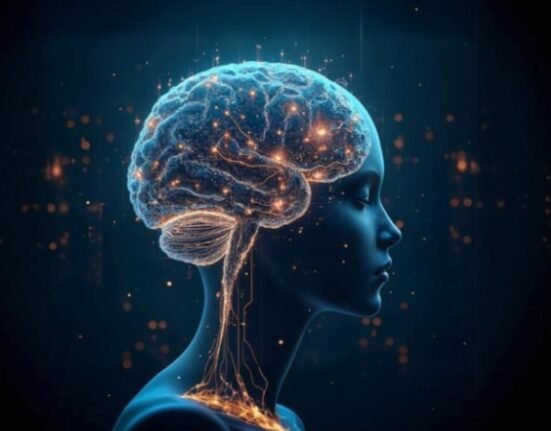In this context, the term “trauma” refers to occurrences that elicit powerful physiological and emotional reactions. According to the Substance Abuse and Mental Health Services Administration (SAMHSA), Trauma and Justice Strategic Initiative, trauma happens when a person undergoes an emotionally or physically damaging or threatening event, and this has long-lasting detrimental impacts on their functioning and overall mental, emotional, social, and spiritual health (Griffin, 2020). A large number of people only report one traumatic event, but some people—especially those struggling with mental health or substance abuse—have endured several or ongoing traumatic events. The Diagnostic and Statistical Manual of Mental Disorders states that being subjected to “actual or threatened death, serious injury, or sexual violence” is what is known as trauma.
Nevertheless, diagnostic criteria are not the only element that can be used to define psychological trauma. Some mental health professionals have begun to see trauma-related symptoms not as signs of a disorder but as a natural human tendency to adapt and survive, or as “adaptive mental processes involved in the assimilation and integration of new information with intense survival emphasis which exposure to the trauma has provided” (DePrince et al., 2022). Any interference with these normally occurring adaptive mechanisms or their neglect causes them to become pathological.
Types of Response
The field of mental health generally acknowledges four distinct reactions to trauma: Responses include: fighting, fleeing, freezing, and wilting. Depending on the individual, these four categories of trauma reactions could show up in various ways (Peterson et al., 2013). A good fight response could manifest as clear limits, whereas an unhealthy one could take the form of violent outbursts. Ideally, a person would have access to the beneficial aspects of all four trauma responses.
Fight Trauma Response
Radical hostility, violence, and coercion characterize the Fight response. Anger and aggression are natural defense mechanisms that our bodies employ in the aftermath of traumatic experiences. When we feel threatened, we could have an overwhelming desire to protect ourselves violently.
Flight Trauma Response
Excessive worrying, obsessive perfectionism, rumination, and panic are symptoms of the flight reaction. A need to flee the imagined danger is a hallmark of this reaction. We could start to feel on edge all the time, searching for a way out of this sticky predicament. Another common reaction to traumatic experiences is ruminating, or an excessive preoccupation with the event and its aftermath.
Freeze Trauma Response
Dissociation, numbness, and a sense of immobility are hallmarks of the Freeze response. Our bodies may go into a protective shutdown mode after experiencing trauma (Grabbe & Miller-Karas, 2018). A detachment from our feelings and a numbness in our bodies are possible outcomes. Also, we could feel that there’s nothing we can do; we’re paralyzed.
Fawn Trauma Response
Identity crisis, lack of boundaries, codependency, and a desire to please others are all characteristics of the Fawn reaction. As a result, we put our own wants and safety on the back burner in order to satisfy the perceived danger. We could become overly reliant on other people for affirmation and approval, and we might struggle with figuring out who we are and where our boundaries lie.
Understanding the Brain and Body in Trauma
In order to comprehend how the brain and body react to trauma, it is necessary to examine a number of brain regions. The brain stem, limbic system (found in the middle of the brain), and forebrain (or prefrontal cortex) are all parts of this system. A person’s amygdala, a component of the limbic system, imprints memories of traumatic events when adrenaline courses through their bodies (Williamson et al., 2016). All of the event’s emotional weight, together with its intensity and impulse, is stored in the amygdala.
“Fear, speed, stress, excitement, not life-threatening.” is the sensory information you’d experience on a roller coaster, for instance. Since it’s an enjoyable ride that you’ll be able to get off of in three minutes, the amygdala can interpret the event’s emotional meaning. Rather than being preserved as a narrative, the amygdala preserves the visual images of trauma as sensory fragments. This implies that the way our five senses were experiencing the trauma as it was happening is how the trauma is remembered.
Visual pictures, odours, sounds, tastes, and touches all contribute to the storage of memories. As a result, sensory input can easily lead the brain to interpret typical settings as threatening following trauma. Think of a red light as a potential spark instead of just a red light. Before, a BBQ sounded like a little bomb going off. The brain becomes unable to distinguish between normal and dangerous stimuli due to the misinterpretation of sensory pieces (González Ramírez et al., 2020).
Consciousness resides in the prefrontal cortex, the logical region of the brain where processing, reasoning, and the meaning-making of language take place. Trauma triggers the “fight or flight” or “freeze” response, which can cause the prefrontal cortex to become inactive. After experiencing trauma, the brain falls into a state of relative disarray and overwhelm, and the body goes into survival mode, turning down the brain’s higher-level reasoning and language systems. An extremely strong, permanently stored stress reaction is the end outcome of the metabolic depression.
The Hippocampus
One of the most important brain structures in learning and memory formation is the hippocampus, which is located in the medial temporal lobe of the limbic system . When people are mentally well, the hippocampus is actively involved in both the encoding and retrieval processes . The physiological hyperarousal that occurs during and after a stressful event. However, can make memory regulation challenging. Memory processing issues can cause either overrepresentation (like nightmares and intrusive thoughts) or suppression (like selective amnesia) or both (Matlin et al., 2019). These cognitive symptoms point to a role for the hippocampus in the pathogenesis of PTSS, particularly in areas of learning that are associated with prior experience.
The Prefrontal Cortex
The prefrontal cortex (PFC) is a region in the brain’s frontal lobes that’s crucial for learning-related cognitive processes like attentional switching and stimulus-response association formation. In healthy people, the prefrontal cortex (PFC) helps with cognitive regulation, which is the capacity to ignore irrelevant data and behaviours in favour of paying attention to what’s important and responding appropriately (Pill et al., 2017). As a key component in the establishment of response-reinforcement connections and the steering of goal-directed activities, the prefrontal cortex (PFC) is crucial for associating stimuli with their rewards.
Symptoms
Nonetheless, following a traumatic experience, you could anticipate experiencing a few typical symptoms. Some typical responses to traumatic experiences are:
- After a traumatic event has passed, it is common to continue to think about and remember details of it. This is more probable to occur if you constantly encounter triggers—whether they be people, locations, or images—that trigger unpleasant memories.
- It’s normal to feel on edge and hyper-aware after experiencing trauma. This is known as hypervigilance. Anxiety is your body’s way of trying to keep you safe by heightening your awareness of things that could hurt you. This built-in safeguard will be more attuned after experiencing trauma.
- After experiencing trauma, your body and mind are likely to be on high alert, and you may find yourself feeling tense and restless (Alessi et al., 2022)). Your body’s natural defence mechanism is at work here as well. Anxieties and terror alert us to the presence of danger, and the myriad of physical sensations that accompany these emotions serve to prepare us for action. All they’re doing is getting us ready to fight, freeze, or run away. In an effort to safeguard you from similar situations in the future, your body’s alarm system will become more sensitive after a traumatic incident.
- It’s natural to have your faith in the world’s ability to protect you shaken after experiencing trauma. As a result, individuals could start to fear the unknown and act accordingly. Things that used to make you feel safe could suddenly make you feel threatened and anxious. This is more likely to happen when you’re in settings that bring up unpleasant memories of your traumatic experience.
Types of Trauma Therapy
Trauma can be effectively treated using a variety of therapy options. Mental health professional may employ the following therapeutic approaches to assist patients in overcoming trauma-related difficulties and PTSD:
- As a type of treatment, prolonged exposure (PE) entails gradually bringing yourself face-to-face with your fear triggers until you develop a tolerance for them.
- One option is cognitive processing therapy (CPT), which entails questioning your assumptions about the traumatic event’s causes and the subsequent ideas and beliefs you’ve formed. Both individual and group settings are suitable for this type of therapy (Huang et al., 2014).
- Trauma-focused cognitive behavioural treatment, is a treatment option for youths. Misguided assumptions and destructive habits can be better addressed with its assistance.
A psychologist specialising in treating trauma, most research has shown that PE and CPT are beneficial for trauma, thus they are the front-line treatments. In contrast to the length of time some people endure tremendous suffering as a result of trauma, both treatments can be completed in three to four months. Both therapies are effective whether administered in person or via the internet.

One benefit of CPT, is that it doesn’t require a description of the actual event to be completed. This can be useful for people who either don’t remember or don’t want to talk about the trauma. Additionally, TF-CBT and EMDR can alleviate PTSD symptoms, which in turn can enhance general functioning and quality of life.
Techniques
Depending on the therapy, many approaches can be taken to address trauma. Your therapist might use some of the methods.
- Imaginal exposure: As part of this exposure technique, you might talk aloud to your therapist about the traumatic event in their mind. This method can help you face your traumatic memories and thoughts if you have been trying to avoid them.
- In vivo exposure: Similarly, this method is employed in exposure therapy. It happens in the real world, not just in therapy (Qasim et al., 2020). The goal is to help you overcome the trauma you may have associated with commonplace events so that you can approach them more slowly.
- Written account: Writing a detailed description of the trauma you’ve suffered may be requested by your therapist.
- Impact statement: One typical CPT approach is to compose an impact statement outlining the reasons for the traumatic event’s occurrence and the ways it has affected one’s life.
- Cognitive restructuring strategies: Thinking more positively and less negatively are two goals of cognitive restructuring techniques, which can be a part of cognitive behavioural therapy (CPT).
Healing
With time, many people will be able to overcome the effects of trauma. No amount of exposure to trauma can cause post-traumatic stress disorder (PTSD). Unfortunately, therapy, social support, and self-care are common components of trauma recovery. Using the following strategies may help someone heal from trauma:
Related: Power of Self-Care in Trauma Recovery
- Substance abuse, engaging in dangerous sexual behaviour, playing out the trauma, or other destructive coping mechanisms may offer short-term relief from trauma symptoms, but they do not lead to lasting healing.
- To remain in the here and now when experiencing flashbacks, panic attacks, or intrusive thoughts, grounding exercises might be useful (Saul, 2022). While we count backwards from five, make mental notes of five visual items, four auditory items, three tactile objects, two olfactory items, and one gustatory item.
- Methods that encourage well-being, such as meditation, physical activity, going for walks in nature, or other forms of relaxation, can assist in alleviating symptoms.
- Healing from trauma greatly benefits from having the support of loved ones or a religious group. To avoid acquiring PTSD, it is helpful to talk about your experiences in a safe space where you won’t be judged.
- Healing from trauma can be greatly facilitated through either one-on-one or group therapy. Some examples of these include therapies for PTSD that have been shown effective for patients of all ages. To alleviate unpleasant symptoms, a trained therapist may be able to detect habits and routines that impede healing.
Related: 10 Meditation Techniques Everyone can (and should) Explore
Trauma-Informed Care
Assuming that a person has likely experienced trauma at some point in their lives is central to the Trauma-Informed Care (TIC) methodology used in the human services sector. Staff members and other individuals receiving services are not resistant to the effects of trauma, and trauma-informed care takes this into account.
Trauma-Informed Care is a paradigm shift in corporate culture that places an emphasis on recognizing and reacting correctly to the impact of trauma on all levels of a business. (Davidson, 2017) in Trauma-Informed Care practice and understanding are becoming ubiquitous in all service responses, much as the change in general procedure for universal precautions. The question “What has happened to this person?” rather than “What is wrong with this person?” must be asked in order for a system to practise trauma-informed care.

Instead of focusing on alleviating symptoms associated with sexual in nature, emotional, physical, or any other form of abuse, TIC seeks to provide accessible and suitable support facilities for those who may have experienced trauma. The risk of re-traumatization and re-triggering of trauma symptoms increases when trauma-informed practices are not incorporated into operational procedures of service systems.
The Guiding Values/Principles of Trauma-Informed Care
Trauma-Informed Care is based on five guiding principles and values that healthcare clinicians and institutions can use to help patients avoid re-traumatization. We can use these ideas in all sorts of service settings. Rather than being provided as a set of procedures and guidelines, the concepts can be applied in various ways according to the nature of the service context.
Trustworthiness, empowerment, safety, choice, and collaboration are the five guiding principles. As a first step in providing Trauma-Informed Care, making sure a client is safe emotionally and physically is paramount. Secondly, the client must have faith in the reliability of the service provider. Having clear expectations for work, as well as setting and consistently enforcing boundaries, are signs of trustworthiness.
In addition, when people work together with service providers to increase their agency over their service experience, service participation increases and the effectiveness of the service may improve. People can finally have something substantial to fall back on if they stop receiving treatment if we help them focus on their strengths, build upon those traits, and develop stronger coping skills.
Conclusion
To sum up, trauma is a powerful event that can cause people to react in a variety of ways, including the “fight or flight” reaction, “freeze” or “fawn” phases. Intervention and assistance can only be effective if we have a firm grasp on how the brain and body react to trauma. Therapy and trauma-informed care are two examples of treatment choices that can help people heal and be more resilient. Community resilience, neurobiological processes, preventative measures, individualised therapies, and comorbidities should be the future directions of trauma research. We can cultivate communities that are healing, resilient, and compassionate by expanding our knowledge and access to resources.
Read More From Psychologs
- Exploring Trauma Dumping: Impact and Coping Strategies
- How trauma affects emotional development in children?
- Beyond Trauma: Illuminating the Power of Post-Traumatic Growth
- How Workplace Trauma Harmful to Mental Wellbeing
- Psychological First Aid – An Immediate Assistance for Trauma Victims
Reference +
- Griffin, G. (2020). Defining trauma and a trauma-informed COVID-19 response. Psychological Trauma: Theory, Research, Practice, and Policy, 12(S1), S279. https://www.researchgate.net/publication/342302815_Defining_trauma_and_a_trauma-informed_COVID-19_response
- Grabbe, Linda & Higgins, Melinda & Jordan, Dorothy & Noxsel, Lauren & Gibson, Barbara & Murphy, Jordan. (2021). The Community Resiliency Model®: a Pilot of an Interoception Intervention to Increase the Emotional Self-Regulation of Women in Addiction Treatment. International Journal of Mental Health and Addiction. 19. 10.1007/s11469-019-00189-9. https://www.researchgate.net/publication/338415730_The_Community_Resiliency_ModelR_a_Pilot_of_an_Interoception_Intervention_to_Increase_the_Emotional_Self-Regulation_of_Women_in_Addiction_Treatment
- Williamson, V., Creswell, C., Butler, I., Christie, H., & Halligan, S. L. (2016). Parental responses to child experiences of trauma following presentation at emergency departments: A qualitative study. BMJ open, 6(11), e012944. https://bmjopen.bmj.com/content/6/11/e012944
- González Ramírez, L. P., Martínez Arriaga, R. J., Hernández-Gonzalez, M. A., & De la Roca-Chiapas, J. M. (2020). Psychological distress and signs of post-traumatic stress in response to the COVID-19 health emergency in a Mexican sample. Psychology Research and Behavior Management, 589-597. https://www.ncbi.nlm.nih.gov/pmc/articles/PMC7398879
- Matlin, S. L., Champine, R. B., Strambler, M. J., O’Brien, C., Hoffman, E., Whitson, M., … & Tebes, J. K. (2019). A community’s response to adverse childhood experiences: Building a resilient, trauma‐informed community. American Journal of Community Psychology, 64(3-4), 451-466. https://www.researchgate.net/publication/335621682_A_Community’s_Response_to_Adverse_Childhood_Experiences_Building_a_Resilient_Trauma-Informed_Community
- Pill, N., Day, A., & Mildred, H. (2017). Trauma responses to intimate partner violence: A review of current knowledge. Aggression and violent behavior, 34, 178-184. https://www.sciencedirect.com/science/article/abs/pii/S1359178917300289
- Alessi, E. J., Hutchison, C., & Kahn, S. (2022). Understanding COVID-19 through a complex trauma lens: Implications for effective psychosocial responses. Social Work, 67(1), 79-87. https://www.researchgate.net/publication/355649196_Understanding_COVID-19_through_a_Complex_Trauma_Lens_Implications_for_Effective_Psychosocial_Responses
- Huang, L. N., Flatow, R., Biggs, T., Afayee, S., Smith, K., Clark, T., & Blake, M. (2014). SAMHSA’s Concept of Trauma and Guidance for a Trauma-Informed Approach. https://ncsacw.acf.hhs.gov/userfiles/files/SAMHSA_Trauma.pdf
- Qasim, Z., Sjoholm, L. O., Volgraf, J., Sailes, S., Nance, M. L., Perks, D. H., … & Cannon, J. W. (2020). Trauma center activity and surge response during the early phase of the COVID-19 pandemic—the Philadelphia story. Journal of Trauma and Acute Care Surgery, 89(4), 821-828. https://www.ncbi.nlm.nih.gov/pmc/articles/PMC7586847
- Saul, J. (2022). Collective trauma, collective healing: Promoting community resilience in the aftermath of disaster. Routledge. https://link.springer.com/chapter/10.1007/978-3-030-67712-1_6
- Davidson, S. (2017). Trauma-informed practices for postsecondary education: A guide. Education Northwest, 5, 3-24. https://educationnorthwest.org/sites/default/files/resources/trauma-informed-practices-postsecondary-508.pdf
- Gupta, S. (2023, November 16). What is trauma therapy? Verywell Mind. https://www.verywellmind.com/trauma-therapy-definition-types-techniques-and-efficacy-5191413













Leave feedback about this